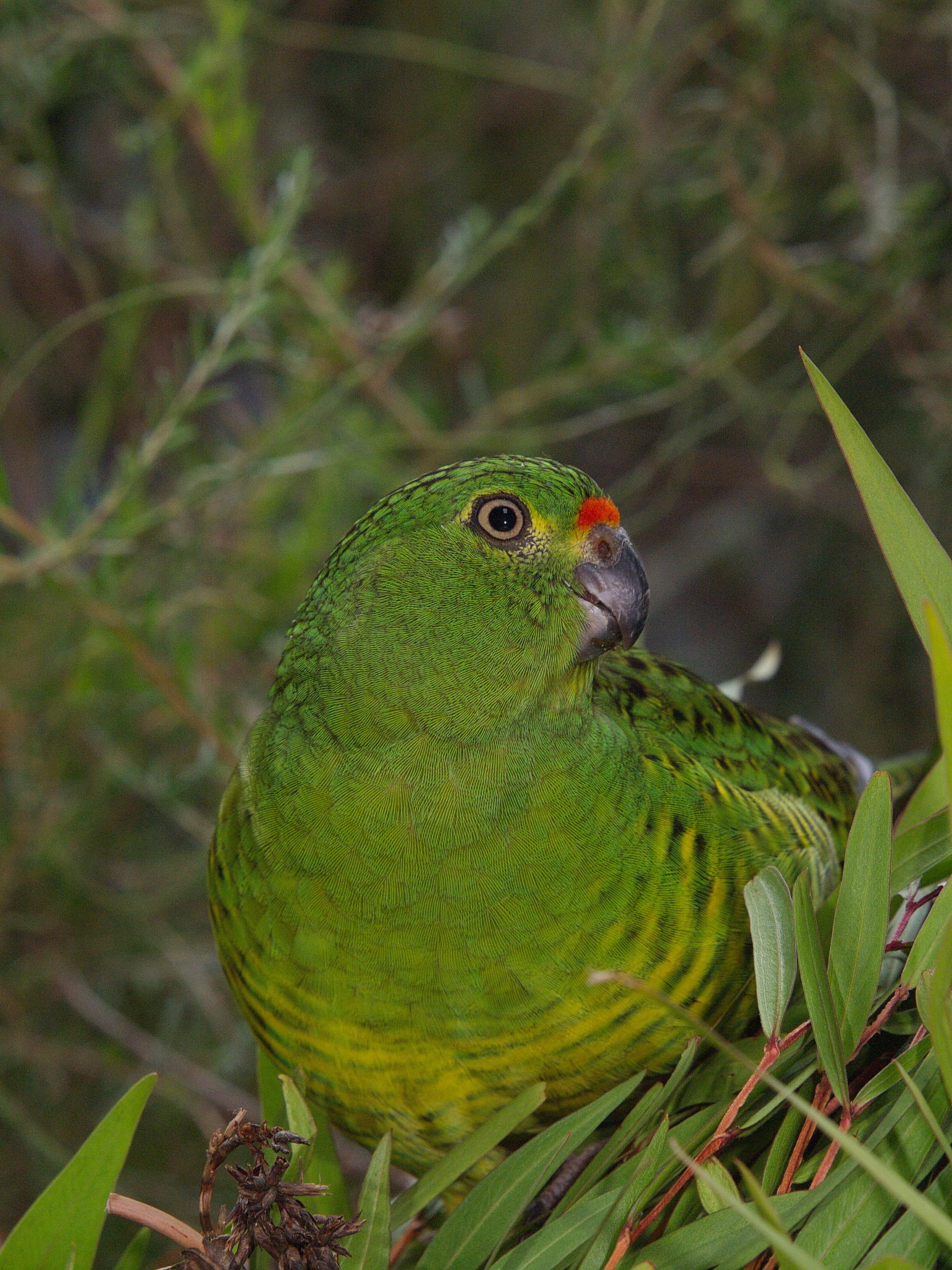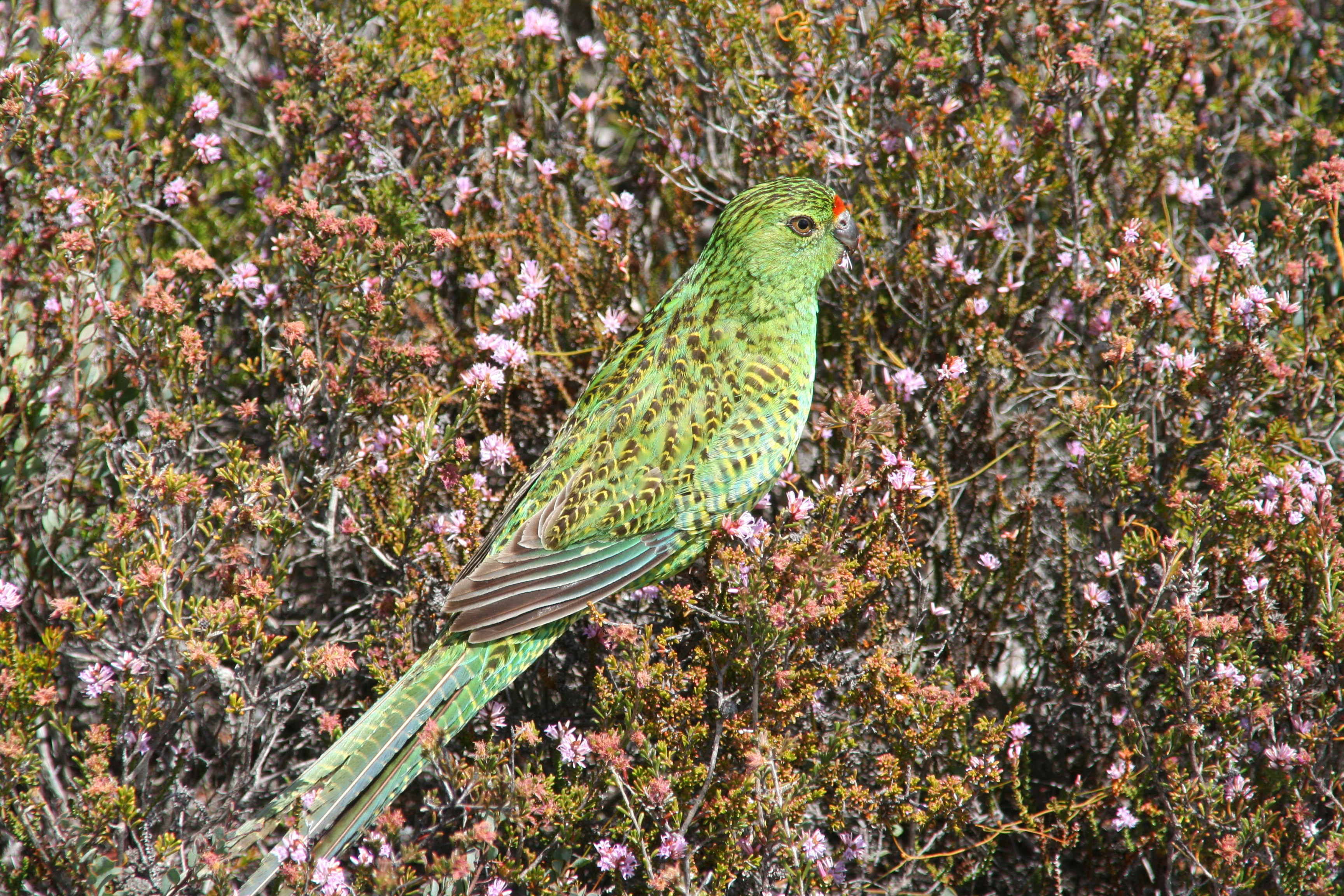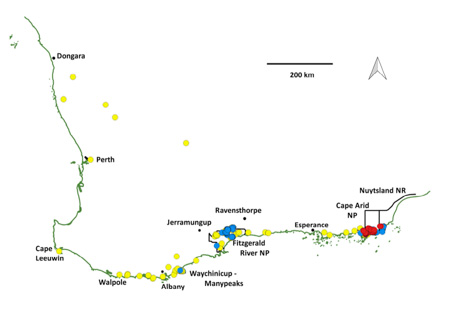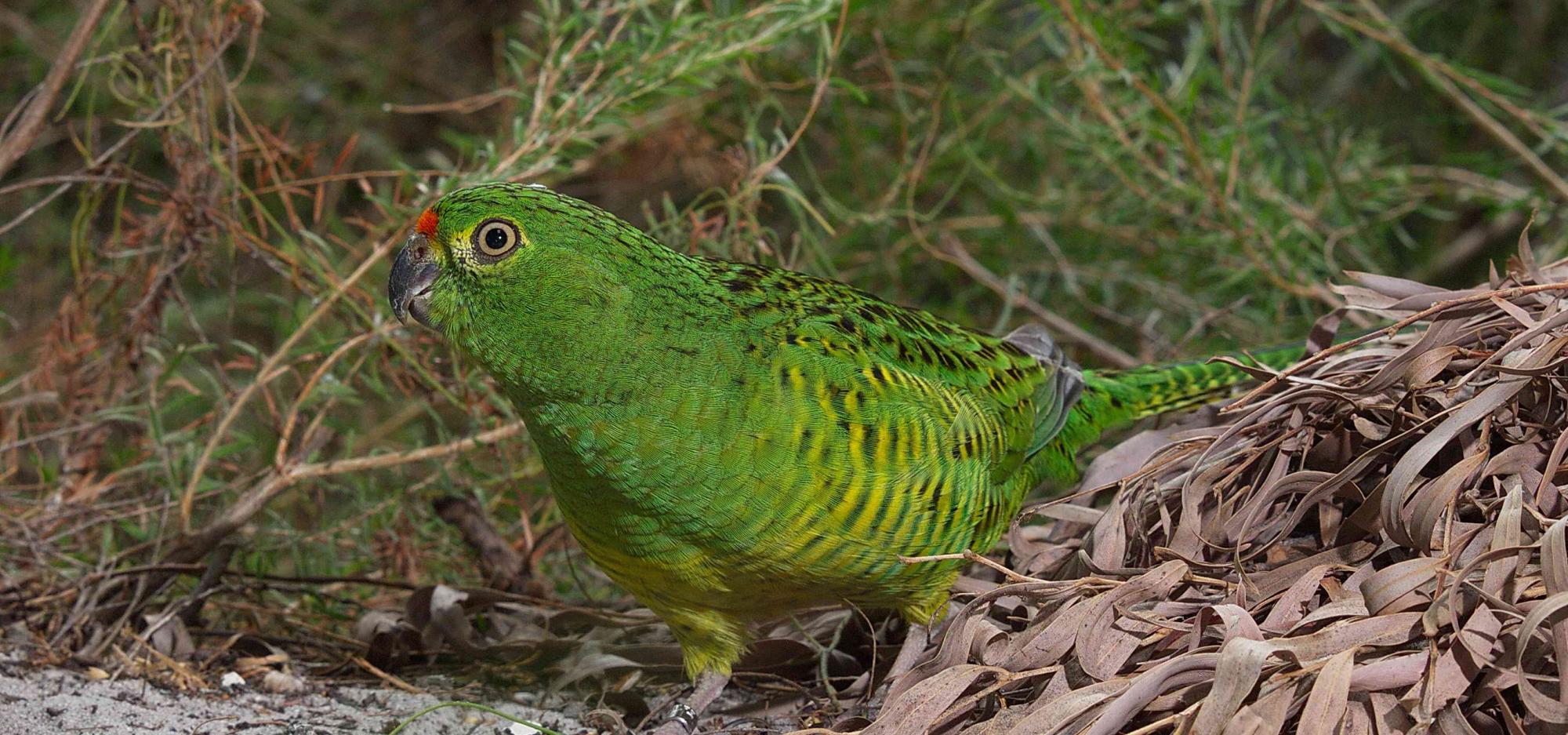
Nyoongar Name: Kyorling
Scientific Name: Pezoporus flaviventris
Common Name: Western Ground Parrot
Conservation status: Critically Endangered. This means a species has an extremely high chance of dying out or becoming extinct in the future.
Fun facts
- Western Ground Parrots are endemic to Western Australia, meaning that they are only found here and nowhere else in the world! Now that’s special!
- Their green, yellow and black plumage (feathers) provides great camouflage making them virtually invisible as they shelter and feed close to the ground in the thick habitat they call home.
- The type of habitat they prefer, called heathland contains a great diversity or variety of plant species, providing them with different food sources to eat including sedges, seeds, flower buds, and flowers.
- They are very secretive birds only revealing themselves for a few minutes at dawn and dusk. They are more likely to be heard from their calls which some people say sounds a bit like an old-fashioned kettle boiling.
- Because they are so secretive not much is known about their breeding habits. Their nest is thought to be a simple shallow scrape in the soil lined with plant material. 3-4 eggs can be laid.
- Young ground parrots leave the nest before they fledge (get ready to fly) and are only capable of short unsteady flight. They are rarely seen because they rarely fly.
Not So Fun Facts
The western ground parrot is one of the rarest birds in the world! That’s not something we should feel particularly proud of!
It is estimated that there are less than 150 of these beautiful birds left anywhere in the world!
They were once found at several places across the southwest of Western Australia . Now they are restricted to two main areas on the southern coast of Western Australia, which doesn’t leave them with many places to go!

Threats to their survival
As western ground parrots spend most of their time close to the ground the main threats to their survival are predation by cats and foxes.
Large and frequent bushfires burning through their known habitat not only removes the vegetation they need for cover but also some of the remaining birds.
Climate change is causing an increase in how often lightning storms occur. These can set off more bushfires and reduce their habitat further.
In the past, the clearing of vegetation for agriculture also contributed to a loss of suitable habitat for them to live.
Find me in the wild

A map of the current distribution of Western Ground Parrot (DBCA, 2017)
Find me at the Museum
You can find me in the Diversity in Adversity section within the Wild Life Gallery on Level 3 of WA Museum Boola Bardip.
Image credits: Header images, map and images in text courtesy of the Department of Biodiversity, Conservation and Attractions.
